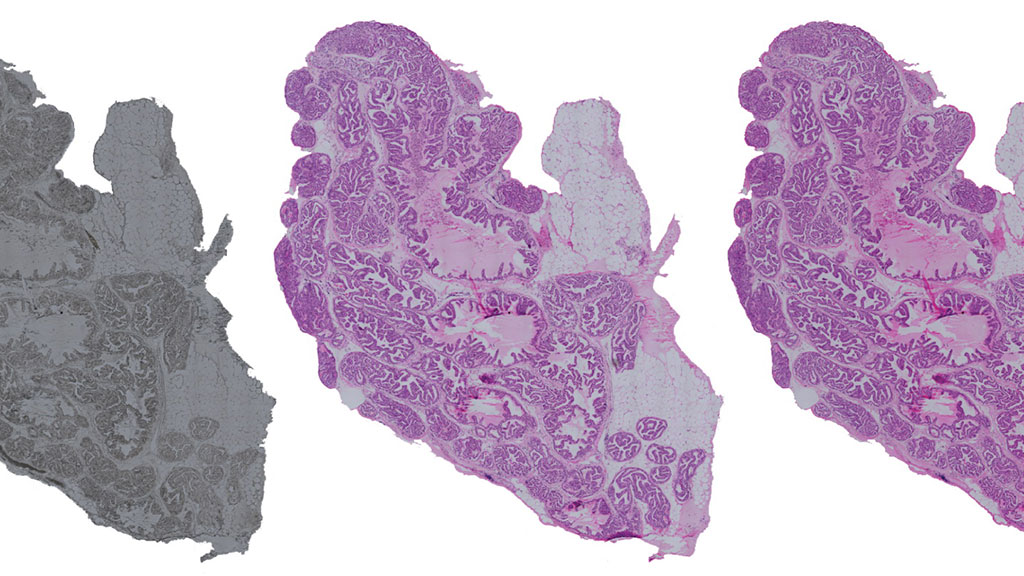AI-Based Method Could Replace Chemical Staining of Histopathological Tissue Samples
Posted on 17 Apr 2023
For over a century, chemical staining has been a foundational technique in the study of histopathology, particularly in areas like cancer diagnostics. One major drawback of chemical staining, however, is its irreversible nature, which often restricts the sample's use in other tests or experiments. To address this limitation, researchers have developed an artificial intelligence (AI)-based approach to virtually stain histopathological tissue samples, potentially replacing the need for chemical staining.
A study led by researchers from the University of Eastern Finland (Kuopio, Finland) has resulted in the development of an AI method that generates computational images closely resembling those obtained through actual chemical staining. These virtually stained images can then be examined for tissue morphology. The virtual staining technique not only reduces the chemical load and manual labor required for sample processing but also allows the tissue to be used for other purposes beyond staining. A key advantage of the proposed method is that it only requires a standard light microscope and an appropriate computer, with no need for specialized hardware or infrastructure.

The rapid advancement of deep neural networks, which learn from vast amounts of data, has revolutionized biomedical image analysis. These methods are not only suitable for traditional image analysis tasks, such as interpretation, but also excel in image-to-image transformations. Virtual staining exemplifies this type of task and was effectively demonstrated by the research team.
“The results are very widely applicable. There are plenty of topics for follow-up research, and the computational methods can still be improved. However, we can already envision several application areas where virtual staining can have a major impact in histopathology,” says Associate Professor Pekka Ruusuvuori from the University of Turku, who led the computational part of the study.
“Deep neural networks are capable of performing at a level we were not able to imagine a while ago. Artificial intelligence-based virtual staining can have a major impact towards more efficient sample processing in histopathology,” said Doctoral Researcher Umair Khan from the University of Turku who was the lead developer.
Related Links:
University of Eastern Finland













